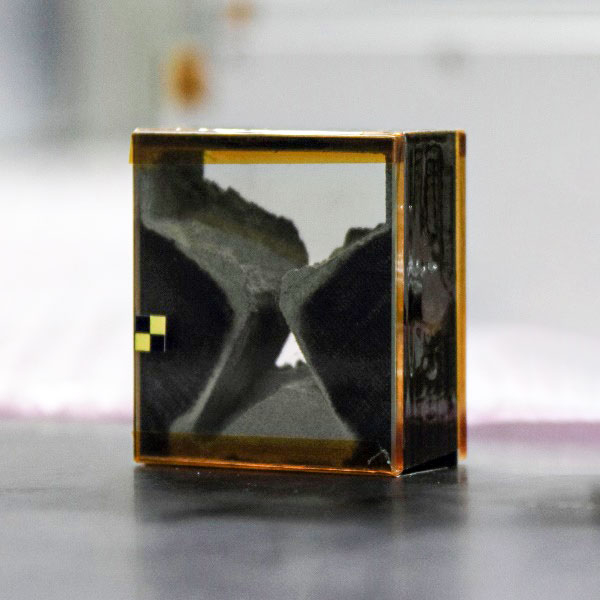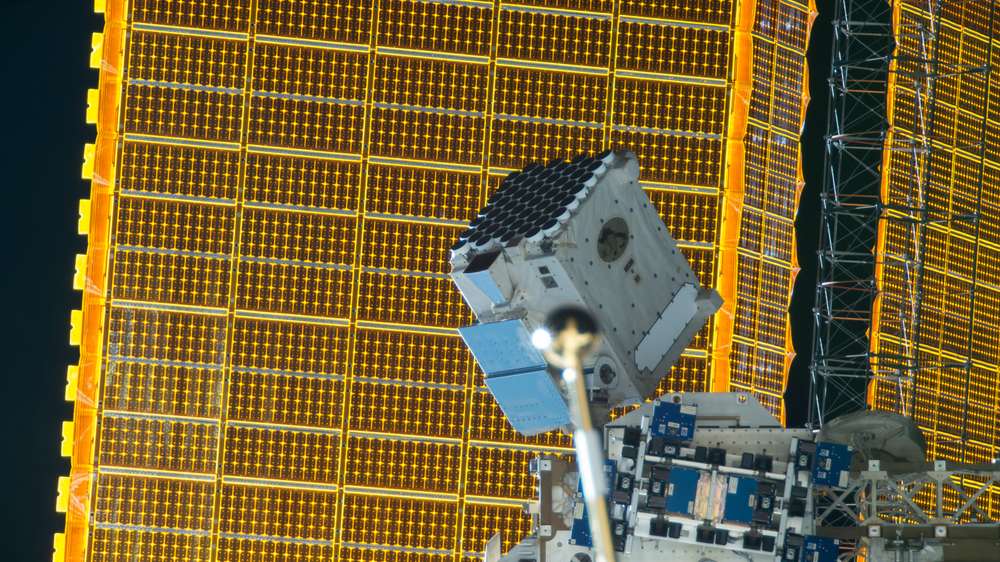Station Science Top News: Sept. 14, 2023
JAXA (Japan Aerospace Exploration Agency) researchers from the Hourglass investigation report on the granular flows of eight different types of material across different levels of artificial gravity on the International Space Station. Results show consistent flows across gravity conditions and unique behavior based on type of material and hourglass flow angle. These results inform the development of technologies for roving on extraterrestrial bodies.
The Hourglass investigation examines the relationship between gravity and the behavior of granular regolith-like materials. An hourglass-shaped device was designed to flow Alumina beads as control and silica sand, Toyoura sand, and five types of regolith simulants as analogous space exploration grains. Specific types of granular material and the slant angle in the hourglass influenced the flow rate, with powder-like material adhering, depositing, and aggregating in the device. A better understanding of the behavior of granular materials supports the design of spacecraft for future mission landings and maneuvering on the surfaces of planets and other celestial bodies.

***
Space Biofilms researchers discovered that material surfaces impregnated with lubricant had fewer bacterial colonies compared to unlubricated materials. Plus, greater biofilm reduction was observed in space than on Earth. These results guide the development of spacecraft materials that help to inhibit biofilm formation on surfaces and in life support systems.
The Space Biofilms investigation characterizes behaviors of biofilms (a community of microorganisms embedded in a self-produced protective substance) that form in space by analyzing the growth of microbial species on different surfaces. In this study, the surfaces observed were silicon wafers lubricated with silicon oil and unlubricated stainless steel commonly used in life support systems. Results show that the few biofilms that grew on lubricated materials were small, loose, and thin. Analysis of genetic changes in the biofilms grown on the lubricated surfaces allows researchers to narrow down genetic changes that reduce biofilm formation. Inhibiting biofilm growth in spacecraft reduces the risk of equipment malfunction and human illness.
***
Researchers used the NICER (Neutron star Interior Composition Explorer) to perform a detailed spectral variation study of two relatively powerful X-ray flares from a nearby star named κ1 Ceti. The visual light curve data contributes to theoretical astrophysics and enhances simulations that are used to study heat in the solar corona and solar flares.
NICER studies neutron stars that emit X-ray radiation to learn more about the fundamental nature of the universe. Visual data from κ1 Ceti allows researchers to infer that it is a young, solar-like star. Researchers have recorded variations in plasma temperature and show that both measured flares had similar energy curves to up to their peak plasma temperature. The measured X-rays are comparable to super flares that happen in our solar system and can be used in solar corona heat flux simulations. Solar flares from the sun can affect Earth’s magnetosphere and daily human activity.








